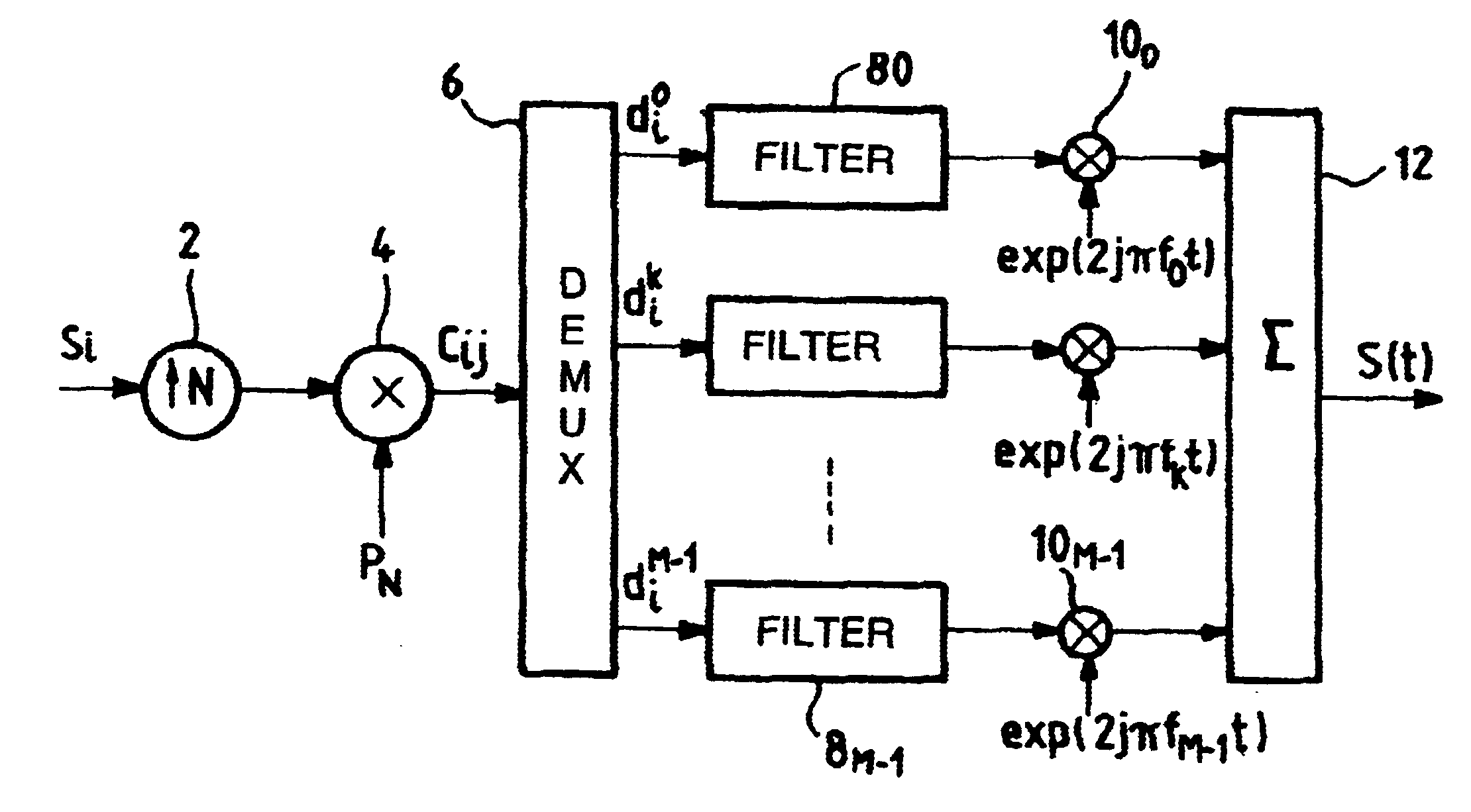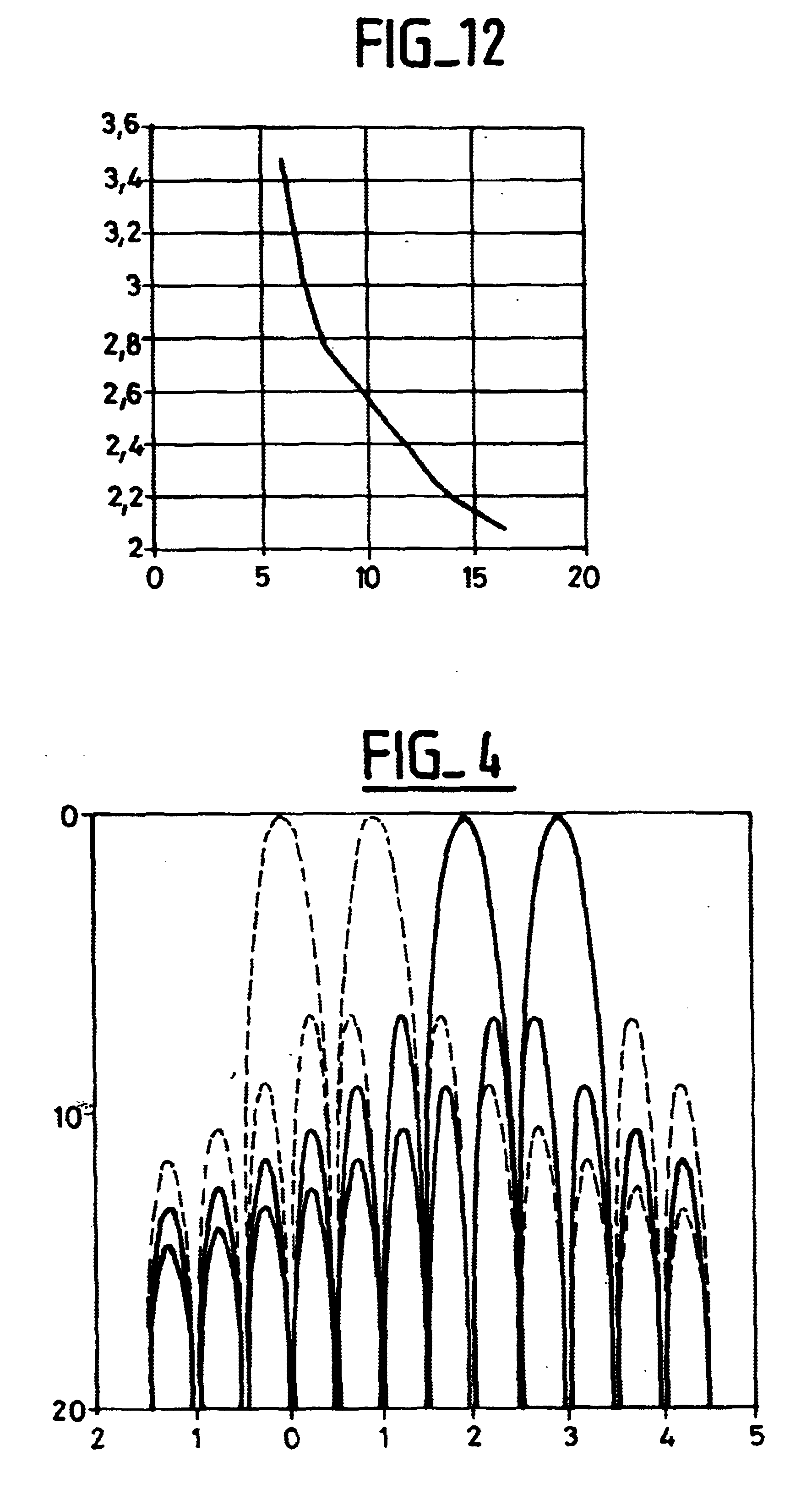Spread-spectrum transmission system with filtered multi-carrier modulation
a transmission system and multi-carrier technology, applied in the direction of digital transmission, transmission path multiple use, electrical equipment, etc., can solve the problems of high power jammer, distortion no longer applies, noise re-fractionation of jammer energy,
- Summary
- Abstract
- Description
- Claims
- Application Information
AI Technical Summary
Benefits of technology
Problems solved by technology
Method used
Image
Examples
Embodiment Construction
In a spread spectrum transmission system, the invention proposes replacing conventional multicarrier modulation as described with reference to FIG. 3 by filtered multicarrier modulation. A suitable distribution of chips over the various subcarriers then makes it possible to implement receiver synchronization algorithms independently on each of the subcarriers.
FIG. 5 is a block diagram of a spread spectrum transmission system implementing the invention. As in FIG. 3, this diagram shows input symbols S.sub.i. These symbols are typically real or complex symbols from linear modulation such as M state phase shift keying (M-PSK) or M-state quadratic amplitude modulation (M-QAM). The received symbols S.sub.i are oversampled, as represented by 2 in the figure, and they are then multiplied by a spreading sequence P.sub.N to obtain chips c.sub.i,j as shown at 4 in the figure. The notion P.sub.N does not imply that the spreading sequence is of a length identical to the period of one symbol. It...
PUM
 Login to View More
Login to View More Abstract
Description
Claims
Application Information
 Login to View More
Login to View More - R&D
- Intellectual Property
- Life Sciences
- Materials
- Tech Scout
- Unparalleled Data Quality
- Higher Quality Content
- 60% Fewer Hallucinations
Browse by: Latest US Patents, China's latest patents, Technical Efficacy Thesaurus, Application Domain, Technology Topic, Popular Technical Reports.
© 2025 PatSnap. All rights reserved.Legal|Privacy policy|Modern Slavery Act Transparency Statement|Sitemap|About US| Contact US: help@patsnap.com



